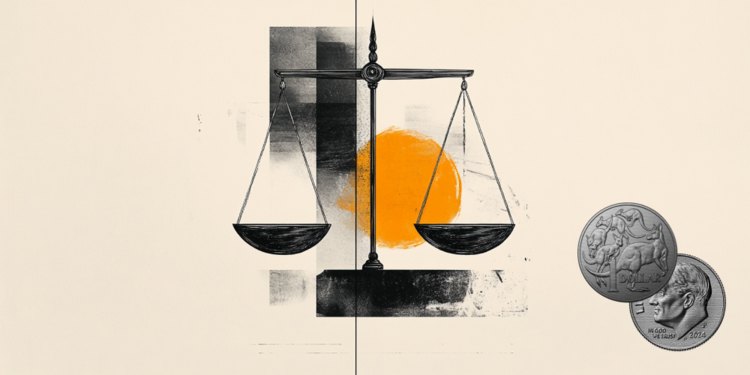- The Australian Dollar drifts higher in Tuesday’s Asian session.
- China’s Caixin Manufacturing PMI rose to 51.2 in March vs. 51.1 expected.
- Traders will closely watch the RBA rate decision on Tuesday.
The Australian Dollar (AUD) gains traction on Tuesday, bolstered by the upbeat Chinese economic data. The latest data released on Tuesday showed that China’s Caixin Manufacturing PMI improved to 51.2 in March from 50.8 in February. This reading was better than the expectation of 51.1. Nonetheless, the upside for the pair might be limited amid global trade uncertainties. The markets might turn cautious ahead of reciprocal tariffs from US President Donald Trump on Wednesday, which could undermine the Aussie.
All eyes will be on the Reserve Bank of Australia (RBA) interest rate decision on Tuesday. The RBA is anticipated to keep interest rates unchanged at the April meeting as it waits out an election campaign fought on cost-of-living issues and girds for the economic impact of a US-driven upheaval in global trade. RBA Governor Michele Bullock’s press conference will follow at 04:30 GMT. On the US front, the ISM Manufacturing Purchasing Managers’ Index (PMI) for March will be in the spotlight.
Australian Dollar edges higher ahead of RBA rate decision
- China’s NBS Manufacturing PMI rose to 50.5 in March versus 50.2 prior, in line with the market consensus. Meanwhile, the NBS Non-Manufacturing PMI climbed to 50.8 in March from 50.4 in February and was stronger than the estimation of 50.5.
- Trump stated late Monday that his reciprocal tariffs plan will target all other countries when they are unveiled Wednesday. He denied that the additional tariffs will target just the top ten or 15 trade partners that have their own import duties on US goods.
- Australia’s Retail Sales rose 0.2% MoM in February, compared to a rise of 0.3% in January, according to the Australian Bureau of Statistics (ABS) on Tuesday. The reading came in below the market expectations of 0.3%.
- Economists surveyed by Bloomberg expect the Australian central bank will stand pat at 4.1% and stick with a cautious stance after easing for the first time in four years last month.
Australian Dollar maintains a bearish lean within a symmetrical triangle
AUD/USD trades firmer on the day. The pair trades within the symmetrical triangle pattern on the daily timeframe. The negative outlook of AUD/USD remains in play, with the price holding below the key 100-day Exponential Moving Average (EMA). The downward momentum is supported by the 14-day Relative Strength Index (RSI), which stands below the midline near 41.50, supporting the sellers in the near term.
The lower limit of the triangle pattern at 0.6225 acts as an initial support level for the pair. Extended losses could see a drop to 0.6186, the low of March 4. Further south, the next contention level is located at 0.6130, the low of January 13.
On the flip side, the first barrier for AUD/USD is seen at 0.6330, the high of March 26. The next hurdle to watch is 0.6352, the 100-day EMA. A decisive break above this level could see a rally to 0.6370, the upper boundary of the symmetrical triangle pattern.
RBA FAQs
The Reserve Bank of Australia (RBA) sets interest rates and manages monetary policy for Australia. Decisions are made by a board of governors at 11 meetings a year and ad hoc emergency meetings as required. The RBA’s primary mandate is to maintain price stability, which means an inflation rate of 2-3%, but also “..to contribute to the stability of the currency, full employment, and the economic prosperity and welfare of the Australian people.” Its main tool for achieving this is by raising or lowering interest rates. Relatively high interest rates will strengthen the Australian Dollar (AUD) and vice versa. Other RBA tools include quantitative easing and tightening.
While inflation had always traditionally been thought of as a negative factor for currencies since it lowers the value of money in general, the opposite has actually been the case in modern times with the relaxation of cross-border capital controls. Moderately higher inflation now tends to lead central banks to put up their interest rates, which in turn has the effect of attracting more capital inflows from global investors seeking a lucrative place to keep their money. This increases demand for the local currency, which in the case of Australia is the Aussie Dollar.
Macroeconomic data gauges the health of an economy and can have an impact on the value of its currency. Investors prefer to invest their capital in economies that are safe and growing rather than precarious and shrinking. Greater capital inflows increase the aggregate demand and value of the domestic currency. Classic indicators, such as GDP, Manufacturing and Services PMIs, employment, and consumer sentiment surveys can influence AUD. A strong economy may encourage the Reserve Bank of Australia to put up interest rates, also supporting AUD.
Quantitative Easing (QE) is a tool used in extreme situations when lowering interest rates is not enough to restore the flow of credit in the economy. QE is the process by which the Reserve Bank of Australia (RBA) prints Australian Dollars (AUD) for the purpose of buying assets – usually government or corporate bonds – from financial institutions, thereby providing them with much-needed liquidity. QE usually results in a weaker AUD.
Quantitative tightening (QT) is the reverse of QE. It is undertaken after QE when an economic recovery is underway and inflation starts rising. Whilst in QE the Reserve Bank of Australia (RBA) purchases government and corporate bonds from financial institutions to provide them with liquidity, in QT the RBA stops buying more assets, and stops reinvesting the principal maturing on the bonds it already holds. It would be positive (or bullish) for the Australian Dollar.

